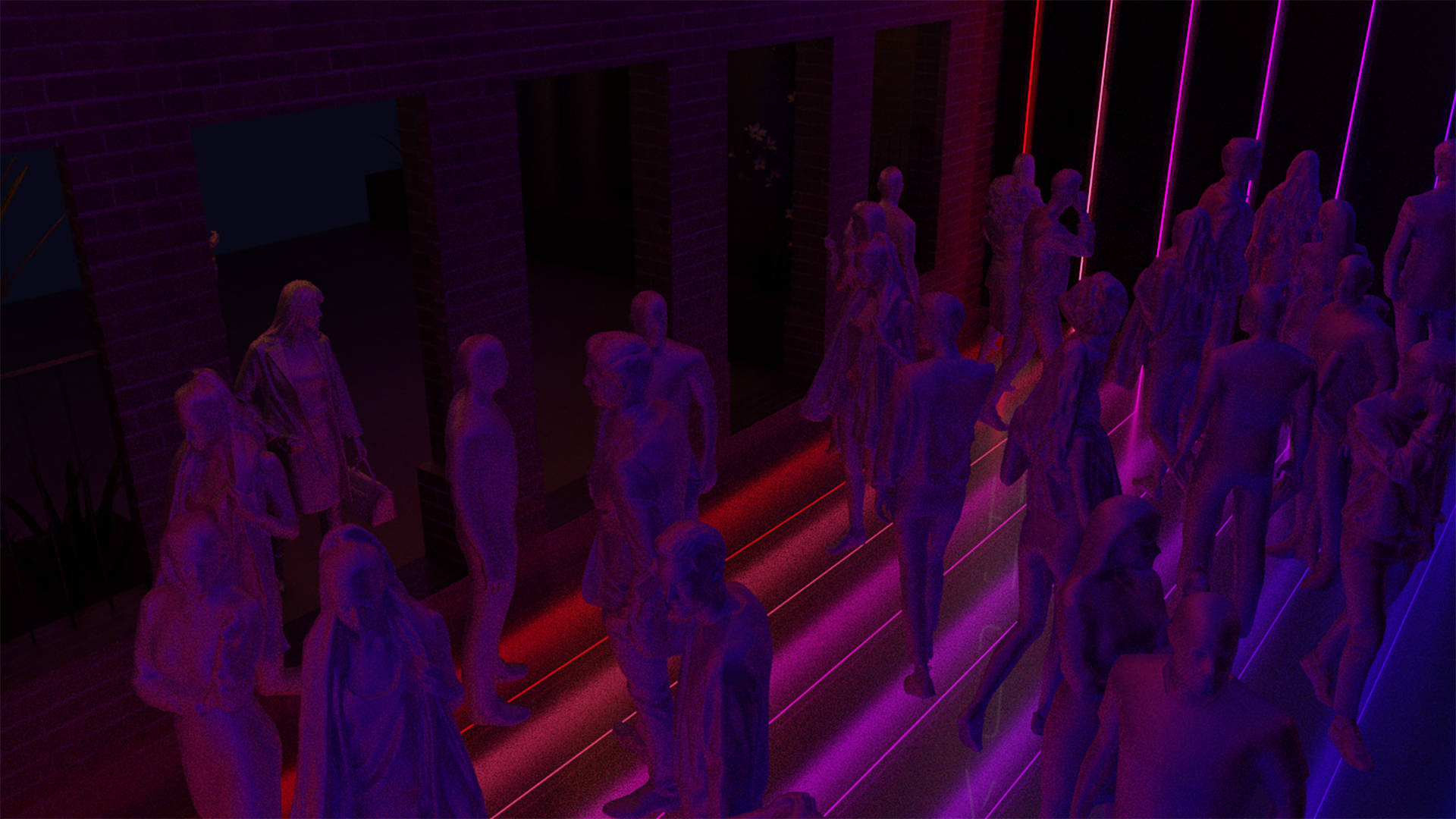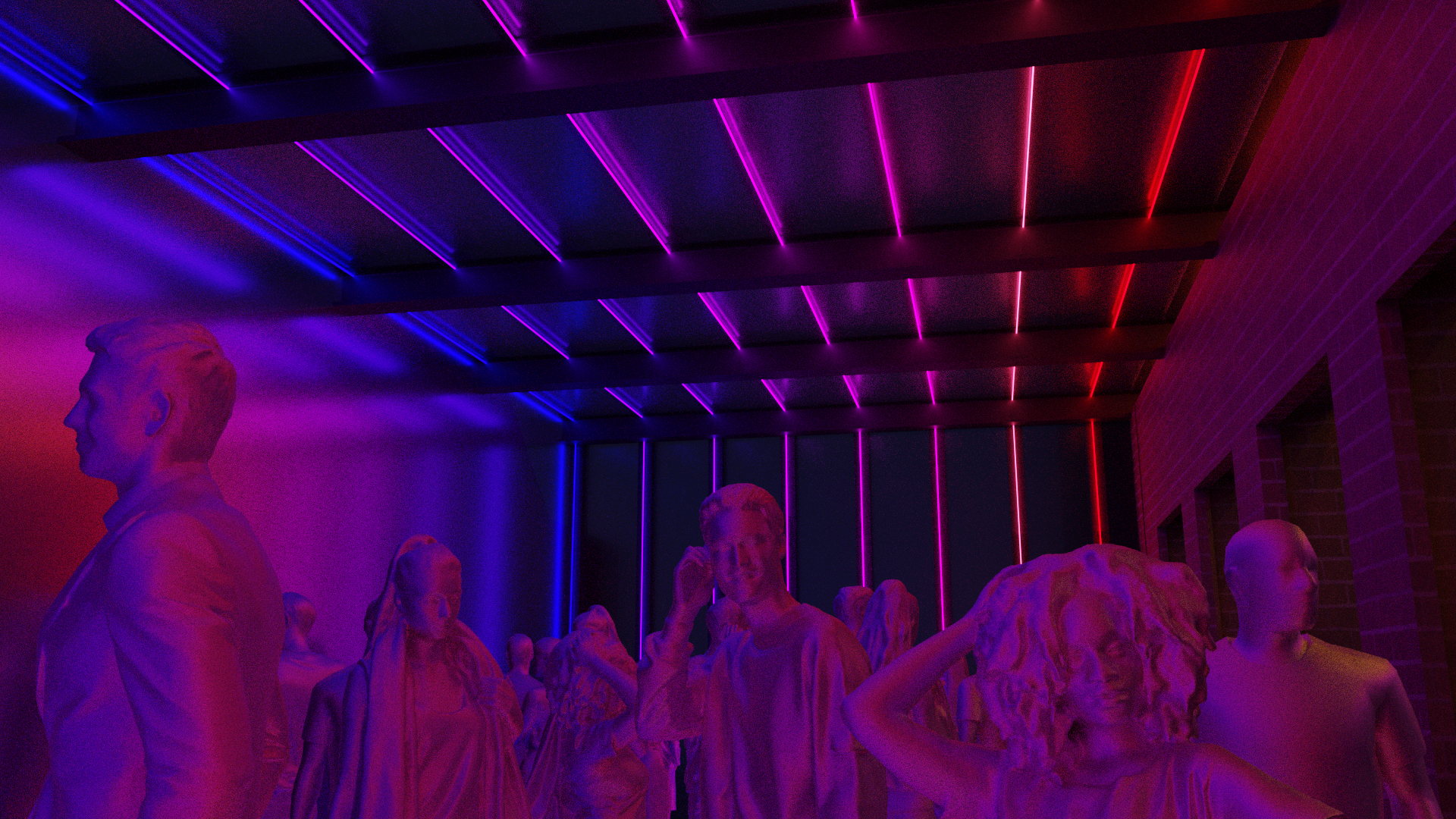
During the busy daytime hours, Fort Lane is a transient common place for the community of Auckland. By night, it is as if worlds shift and the alleyway transforms into a centre of nightlife. As club-goers begin to repopulate the city at night, the Roxy nightclub illuminates, bathing passers-by in a new light. Faceless bodies behind a translucent window still register as life to those at a distance, almost closing the space between the pavement of the lane and the club’s dancefloor. Fort Lane becomes livelier still in the turbulent hours before dawn, before smoothly transitioning back into the hustle and bustle of the morning.
I propose a redesign of the Roxy nightclub, which blurs the line between private and public by extending the atmosphere of the nightclub further into the lane. The amalgamation of light and shadow make this possible. Sections up and down Fort Lane are already bathed in light, creating a rhythm of lighting conditions as you journey from one end to another, with David Svensson’s work Eyelight Lane (2014) as your red neon companion. With the use of translucent material (sandblasted glass), the relationship of light and shadow becomes more apparent, along with distance and proximity. An extension of Roxy over the laneway brings an entirely new atmosphere, creating a lightbox that centres focus on the silhouettes of club patrons inside and bringing the exclusive environment into public space.
The culture of the environment would change with this addition. It makes way for different uses, beyond drinking and dancing. With a more visually titillating section of the nightclub, the lightbox extension becomes a kind of exhibition space or the backdrop for a photoshoot. The space’s use becomes flexible, malleable by those both on the inside and the outside, creating the opportunity for interior and exterior worlds to communicate.




